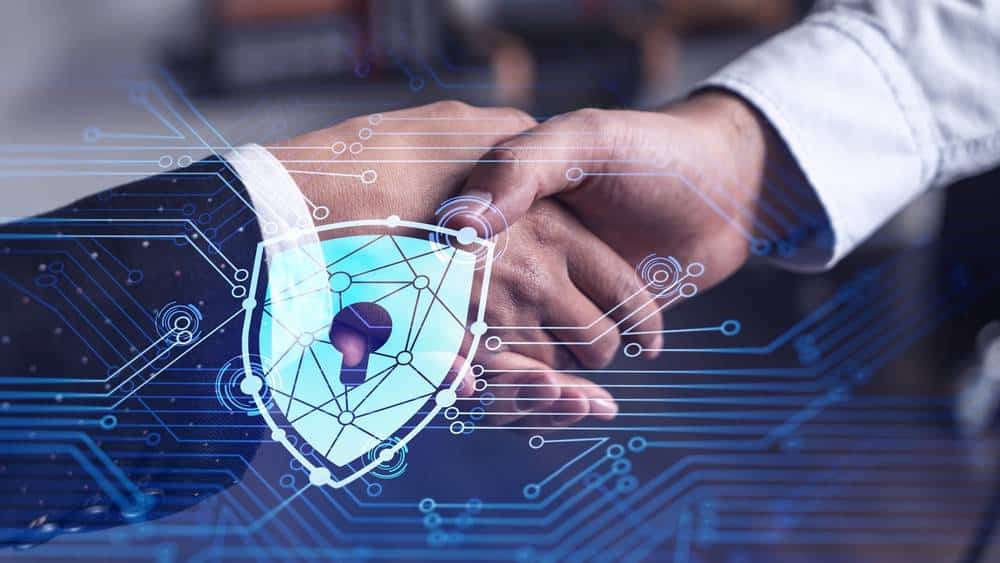Hey Everyone!
Welcome to our comprehensive guide on Cybersecurity Principles.
This guide explores all the Cyber Security Principles, discussing how you can use them to protect yourself against cyber threats.
After reading this guide, you will be familiar with the steps you need to take to safeguard your personal and business computer systems from cybercrime, as outlined by the cyber security principles.
This guide will cover:
- What are the Cyber Security Principles?
- What is the purpose of the Cyber Security Principles?
- Who sets the Cyber Security Principles?
Let’s dive straight into it!
What are the Cyber Security Principles?
As companies begin to conduct more processes online, the threat of being a victim of cybercrime is constantly lingering.
Should a cyber criminal penetrate your company’s computer system, you risk losing valuable data that can lead to having your company’s possessions stolen.
Worse, the companies you engage with can also be affected by data breaches to your business and suffer losses from cybercrime.
Hence it is crucial to equip yourself with protective measures to prevent any violation from occurring within your company’s computer system.
A great way to protect yourself is to start by familiarizing yourself with the cyber security principles, which outline the strategies every organization should use to protect themselves from cybercrime.
These principles effectively safeguard business computer systems from cybercrimes and benefit personal computer systems, which are also susceptible to cyberattacks.
With that said, we’ll dive into all the Cyber Security Principles below so that you can understand how to protect yourself from cyber threats.
Framing a Risk Management regime
A Risk Management regime is a process that all stakeholders in a company follow when a risk arises to a company’s cyber system.
These risks may be personnel-related, associated with artifacts during assurance activities, or insufficient process-related.
Mitigating the risks mentioned earlier boils down to having an efficient risk management framework that helps you understand the specifics of your software security.
In addition to having an efficient risk management framework, continuously checking for its efficacy will ensure a business is ready to manage risk regardless of climate.
Economy of Mechanism
When considering which security mechanisms you need to use to protect your company from cyber threats, it’s essential to consider the mechanism design.
While smaller designs are associated with simplicity and the likelihood of encountering minor errors, more significant designs may lead to more frequent error occurrences.
Furthermore, with complex security mechanisms, finding the source code of a breach can be problematic.
Hence, it is essential to use small and simple design mechanisms to ensure successful software inspection and hardware examination.
Fail-safe defaults
Ever thought about what happens should your cybersecurity accidentally fail?
Often, while cybersecurity is in its failure stage, attackers can gain access to valuable data prone to vulnerability.
However, if your security system fails securely, that is, through implementing secure defaults, you’re likely to experience stagnation in the system rather than the corruption or loss of its data.
To ensure safe defaults are in place, assess where the possible weak areas of a system occur during cybersecurity failure and ensure it doesn’t threaten the system.
Network security
Network Security is a term that encompasses all the rules and configurations that an organization or individual puts in place to maintain a confidential, accessible, and secure computer network.
Having Network Security reduces the risk of being a victim of cyber attacks.
When implementing network security, it’s essential to ensure you obtain Network security that can protect you from the many vulnerabilities and hackers.
Hence, when setting up Network security, organizations tend to use security measures that cater to individual threats to form more robust protection.
Managing user privileges
When deciding the amount of access each user of your network or system should get, ensure it is the bare minimum.
There is a higher risk of falling victim to a cyberattack whenever too much access is granted.
Should you have to give a user extensive access to a particular resource, ensure, it’s appropriately controlled and managed.
Open design
The Open Design Principle outlines how security software applications and systems should be designed and developed.
According to the principle, the security systems and applications should not solely rely on the secrecy of design and implementation.
This is because depending on the secrecy of the design is like assuming the users of a particular program are inexperienced enough to defeat a security system.
The problem with this thinking is that if a familiar user manages to crack the ‘code,’ you’ll undoubtedly become a victim of security breaches.
So, instead of determining the strength of a security program according to the ignorance of a user, having programs that aim to protect you from even the most technical of hackers.
Monitoring
Monitoring is a management-approved procedure concerning cyber security systems’ inspection, calibration, maintenance, and testing.
It also encompasses the management of repairs and improvements needed in warning and security systems.
An efficient monitoring procedure ensures that security systems remain reliable so that if a breach occurs in the system, warn personnel can be quickly alerted.
Complete mediation
This principle ensures that every subject who tries to access a network system undergoes an access check.
Should an access check be completed each time a user tries to access an object, this will decrease the chances that a user is mistakenly given more permission to that object.
Contrastingly, if a system reviews a subject’s eligibility to access an object rarely, there will be a more significant threat for attackers to exploit the system.
Home and mobile network security
Home and mobile network security refer to the protections for internet connections on devices used in a household.
There is often a misconception that home-based networks do not pose severe security threats because a few people usually use them.
However, this is untrue.
Home internet connections can be susceptible to outside threats like any other cyber network.
Furthermore, with many workers working remotely, a company’s local network can be breached from a home-based network should its connection be insecure.
Therefore, securing home and mobile networks is essential.
Some top ways to secure home-based networks are installing a firewall, installing denial-of-service controls, regularly updating antivirus software, and increasing your wireless security.
Work factor
Work factor refers to the cost of bypassing a security system compared to the resources an attacker uses to penetrate a security system.
By establishing the work factor, you can calculate the cost of circumventing.
For example, a crime attacker could attempt 488 = 663 152 possibilities to crack a 4-letter code.
But an expert can also consider the possibility that attackers use tools that can crack a cipher much faster and pose little difficulty.
Incident management
Cyber attacks can still happen despite all the efforts a cybersecurity professional can take to secure a network.
An organization must have an efficient plan to manage cyber threats when they occur.
When an organization develops an efficient plan, it will be in a position to react to threats promptly, analyze incidents accurately, and respond to mitigate or limit the damage.
Responding to a cyberattack promptly means an organization has implemented effective incident management procedures.
Prevention of Malware
If you’ve been a victim of your hardware crashing or your computer programs suddenly becoming unusable, then you are probably already familiar with the term Malware.
Malware encompasses several forms of malicious programs that invade your computer and harm your system.
When it occurs, it can be a harrowing experience as apart from losing your device’s standard functionality, your data can be stolen, encrypted, or even deleted.
Hence, it’s crucial to prevent Malware from taking place.
Preventing Malware is done by identifying how Malware can approach your system and finding solutions to target each approach.
For example, while you’d need to get spam email software to prevent phishing attacks on your emails, you’d need firewall software to avoid Malware attacks on your network.
Acceptance of security breaches
With security vulnerabilities being nothing unusual to computer systems, the fact that security breaches inevitably occur should be no shocker too.
That said, it’s essential to know that no matter how sophisticated a cybersecurity system may be or how much you follow data security principles, cyber attackers can always penetrate systems stealing sensitive information.
The bright side, however, is that with effective intrusion detection and incident response measures, and by engaging in awareness training from time to time, you’ll be able to catch breaches quickly.
Least Common Mechanism
The Least Common Mechanism principle suggests that many users using one mechanism to grant access to a resource may pose problems to data security.
The processes of an internet server best explain this concept.
Should an internet server be the sole mechanism of establishing authentication to access a resource, users, and attackers can quickly gain access to the resource.
On the other hand, using different tools to access a resource allows access control amongst various users to be better managed.
Compromise Recording
According to the Compromise Recording principle, it is better to have cyber security that’s able to identify a compromise rather than prevent loss.
The notion comes from the assumption that recording the intrusion will help familiarize experts with the individual threat after a cyber system is breached.
By gathering more details about the unique threat, experts can develop an effective response for future purposes.
User Education and Awareness
While it is vital for the individuals who work with cybersecurity providers to be well trained, it’s equally essential for users of cybersecurity products to know about the security that safeguards their systems.
Without adequately knowing the functionality of your cybersecurity tools or the risk management plans, you’ll risk compromising your data.
Removable Media and Controls
While using Removable media like CDs or USBs can often be convenient for storing data, they tend to pose cybersecurity risks.
Many of their threats stem from their ability to connect to various networks, making it easy for attackers to breach an entire network system just from a single portable storage device.
And it doesn’t help that most security incidents occur through USB devices.
Hence, applying password protection to removable devices is crucial to mitigate any cyberspace risks associated with removable media.
What is the purpose of the Cyber Security Principles?
As more business operations go online, the threat from computer hackers executing cyber crimes continues to increase.
What’s more, the danger isn’t just stealing sensitive data; it could simply be disrupting a look of a website or the standard functionality so that hackers can get street cred.
Even if you think you don’t have much to lose from cybercrime, it’s essential to safeguard yourself from cybercrimes, whose damage can often be much more extensive than anticipated.
When looking to protect yourself, this is where the cyber security principles would hold significance to you.
They provide strategic guidance for organizations and individuals on protecting their networks or systems from cybercrime.
The Cyber security principles are curated in such a way that they address the governance of cybersecurity and the implementation of strategies to reduce security risks.
Furthermore, they outline how to detect cyber threats and provide response mechanisms that you should deploy for disaster recovery.
With that in mind, let’s look at who’s responsible for setting them in the next section.
Who sets the Cyber Security Principles?
While several bodies set cyber security principles, including private security companies, the main body responsible for setting cyber security standards in the US is the Cybersecurity & Infrastructure Security Agency (CISA).
Although their primary role is to reduce the risk of cyber threats nationally and on a governmental scale, they collaborate with various industries to help secure systems and networks across organizations and individuals.
Conclusion

With cybersecurity principles readily available, there’s no reason you should not be able to access guidance on safeguarding your information systems and protecting your sensitive data from cyberattackers.
If the terminology used to detail cybersecurity principles seems complicated to decipher, then with guides like this one, which simplifies what each principle entails, you’ll understand how they should be implemented.
Hence, after reading this guide, we hope it will be easier for you to implement cybersecurity principles to protect yourself from cybercrime.
FAQs

What are the basic tenets of cyber security?
The five tenets of cyber security as Mission, Manage, Risk, Decision, and The Big Three.
They define how cybersecurity should be managed, including the importance of developing cybersecurity that aligns with the organization’s mission and detailing the different ways to manage risk to leadership before implementing a risk management strategy.
What are the principles of Information Security?
According to Imperva, the three main principles of Information Security are Confidentiality, Integrity, and Availability.
Confidentiality refers to the measures put in place to avoid unauthorized information disclosure. Integrity refers to data reliability, and Availability refers to granting access to data when needed.
What are the major principles of computer security?
Like Information security, the fundamental principles of Computer Security are Confidentiality, Integrity, and Availability.
Confidentiality means data is only readable to authorized users; Integrity refers to the maintenance of data so that it is not altered or deleted.
Availability refers to information being available when needed.
What are the foundational principles of cybersecurity domain?
According to CCNA7.org, there are three foundational principles of the cybersecurity domain.
These are Confidentiality, Integrity, and Availability.
These principles detail what a cyber security expert should focus on when attempting to protect a network or system.
What are the NSA first principles of cybersecurity?
According to the National Security Agency, the ten first principles of cybersecurity are Domain Separation, Process Isolation, Resource Encapsulation, and Least Privilege.
Other First Principles include Layering, Abstraction, Information Hiding, Modularity, Simplicity, and Minimization.
What are the principles of cybersecurity?
Cybersecurity principles guide organizations and individuals in protecting their systems and networks from cyber-attacks.
Some major cybersecurity principles include Fail-safe defaults, Incident Management, Prevention of Malware, and Acceptance of Security Breaches.
What is cybersecurity?
Cybersecurity refers to the processes taken to protect networks, programs, and systems from digital attacks.
Digital attacks, also known as cyberattacks, are often meant to invade a system to change, destroy or steal valuable data.
The result of cyber attacks for victims is usually the destruction of normal business operations and extortion of money.









